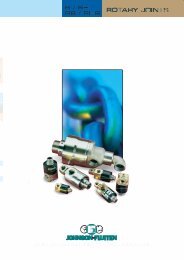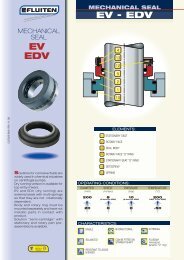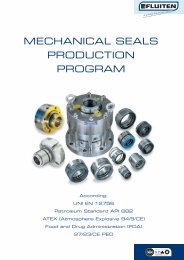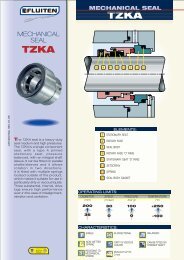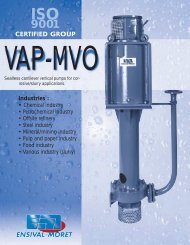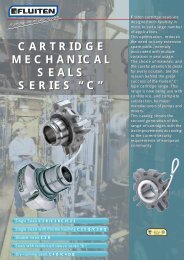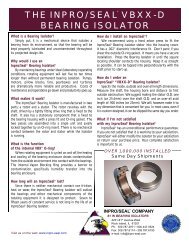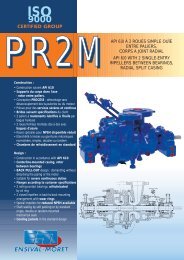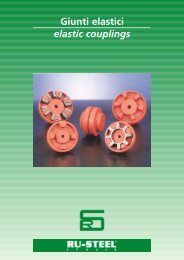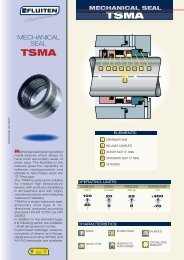Copertina (Page 2) - FLUITEN-VIKOV, s. r. o.
Copertina (Page 2) - FLUITEN-VIKOV, s. r. o.
Copertina (Page 2) - FLUITEN-VIKOV, s. r. o.
You also want an ePaper? Increase the reach of your titles
YUMPU automatically turns print PDFs into web optimized ePapers that Google loves.
GENERAL GUIDE-LINES FOR ASSEMBLY AND ALIGNEMENT<br />
Precise alignments, when assembling the coupling, will allow<br />
changes of conditions during operation and thus ensure a long,<br />
trouble free, working life to the coupling itself.<br />
Parallel bored hubs should be fitted so that the shaft end is flushed<br />
with the flanges’ faces: the distance between the flanges will<br />
match with the “S” value for one-flexible element couplings, and<br />
with the complete “DBSE” value with two-flexible elements couplings.<br />
Once the machines are ready to start, it is necessary to<br />
begin with a first alignment placing a line on the hubs’ flanges<br />
every 90°. (fig.1). Doing so both a vertical and an horizontal alignment<br />
is approximately obtained. After that it is suggested to<br />
check the axial alignment which must be within the limits here<br />
quoted.<br />
Axial alignment<br />
One flexible-element couplings:<br />
4 Bolt couplings: -0\+0.5 of “S” value<br />
6 Bolt couplings: -0\+0.4 of “S” value<br />
8 Bolt couplings: -0\+0.25 of “S” value<br />
Two-flexible elements couplings:<br />
4 Bolt couplings: -0\+1 of “DBSE” value<br />
6 Bolt couplings: -0\+0.8 of “DBSE” value<br />
8 Bolt couplings: -0\+0.5 of “DBSE” value<br />
Radial and angular alignment<br />
At this point it is important to carry on the flexible element<br />
assembly, or more flexible elements endowed with “DBSE”,<br />
tightening the nuts to their correspondent bolts.<br />
Use a dial indicator in order to achieve the minimum distance<br />
between the flanges’ faces, then reset it, note the maximum<br />
distance, divide such data by the flange’s diameter, the result<br />
mustn’t exceed the limits here quoted:<br />
4 Bolt couplings: 0.0040 mm. / mm. of the flange’s diameter<br />
6 Bolt couplings: 0.0030 mm. / mm. of the flange’s diameter<br />
8 Bolt couplings: 0.0020 mm. / mm. of the flange’s diameter<br />
Alternatively, carefully note using a centesimal gauge the<br />
distance between the flanges’ internal surfaces (fig.3) obtaining<br />
the maximum distance A and the minimum distance B. With<br />
the D flange’s diameter:<br />
A – B<br />
=<br />
D Maximum Misalignment in mm, which must be with<br />
in the up-quoted values.<br />
When working with two-elements couplings repeat the operation<br />
on both coupling’s sides, or, alternatively, block one side of the<br />
coupling inserting a grinding gauge equal to “S” value, tighten<br />
that side with terminals completely stiffening one side.<br />
Now proceed, as above indicated, checking the other side of the<br />
coupling, noting that the values shall be double.<br />
Such procedures allow both an angular and a parallel misalignment’s<br />
checks, but they mustn’t be regarded as assembly or<br />
maintenance instructions whatsoever.<br />
fig. 1 fig. 2 fig. 3<br />
25



